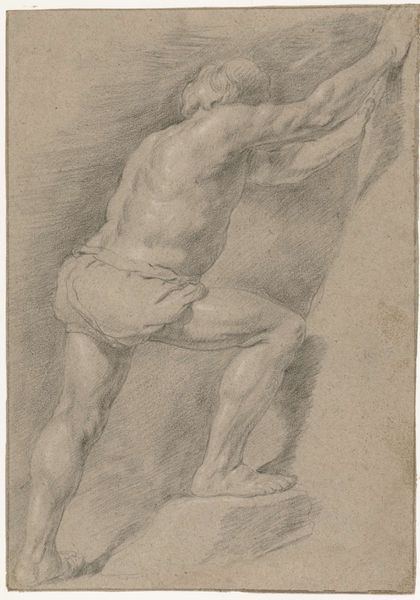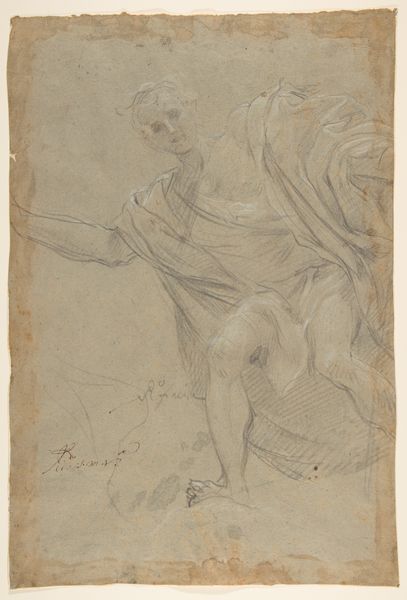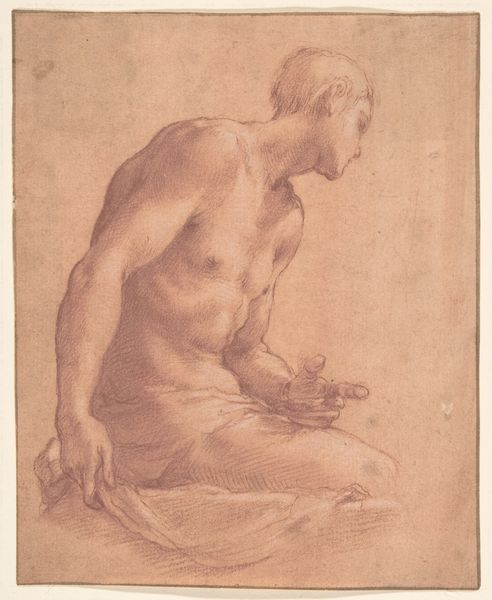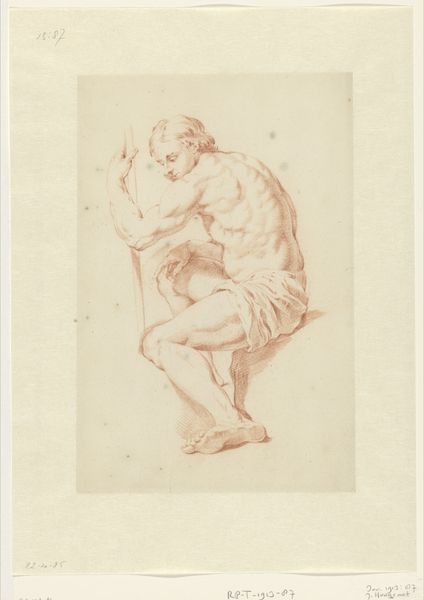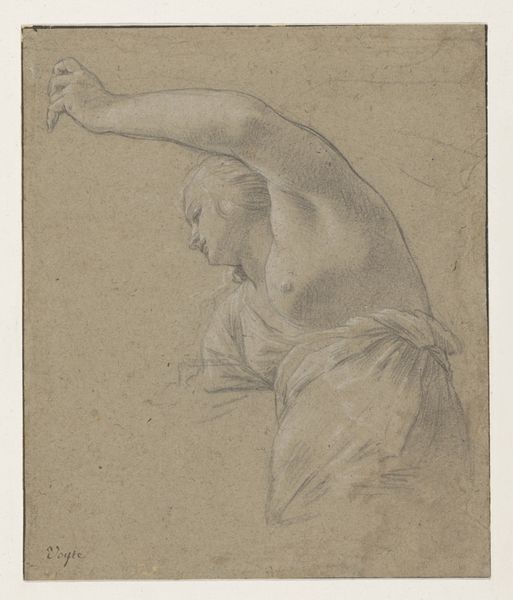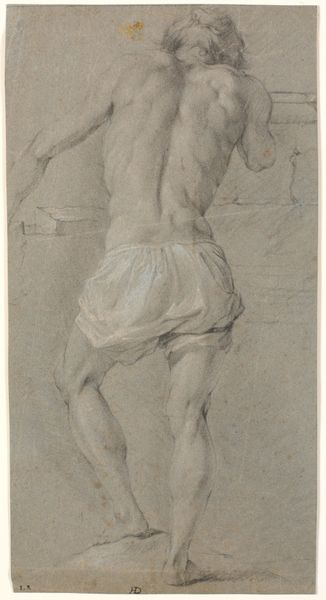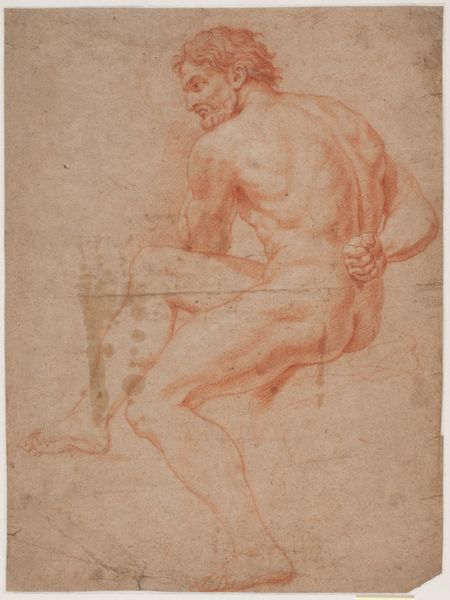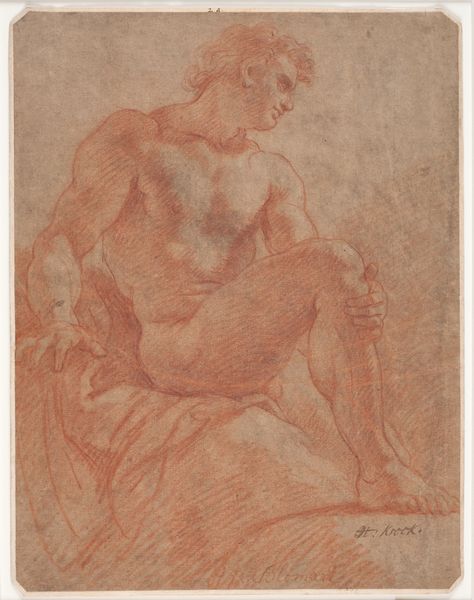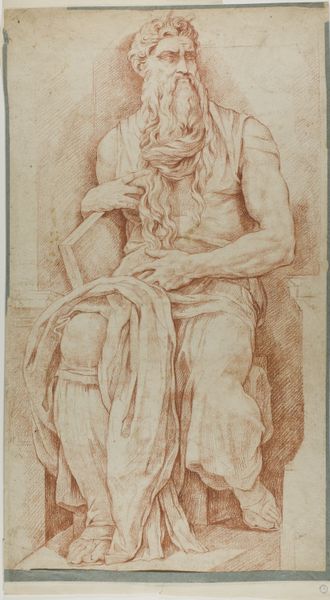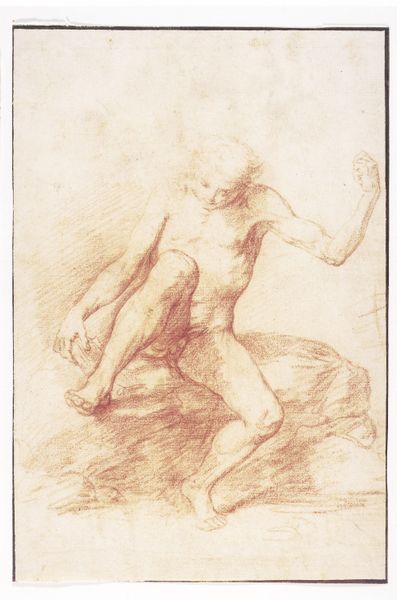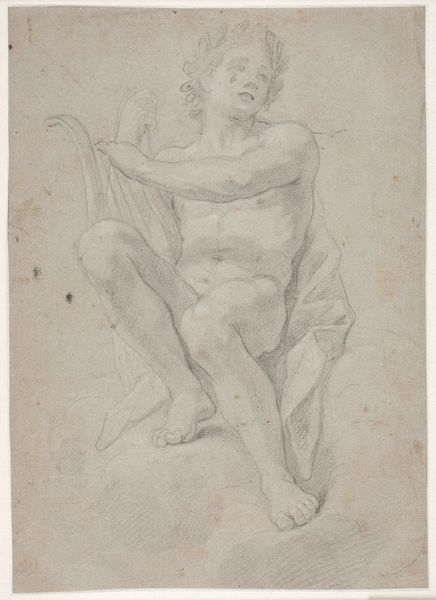
Study of Male Figure Kneeling in a Three-Quarter View, Facing Left (a Shepherd) 1700 - 1767
0:00
0:00
drawing, print, dry-media, pencil
#
portrait
#
drawing
#
baroque
# print
#
charcoal drawing
#
figuration
#
dry-media
#
pencil drawing
#
pencil
#
men
#
line
#
portrait drawing
#
academic-art
Dimensions: Sheet: 12 13/16 × 8 7/8 in. (32.5 × 22.5 cm)
Copyright: Public Domain
Editor: This drawing, titled "Study of Male Figure Kneeling in a Three-Quarter View, Facing Left (a Shepherd)," was created sometime between 1700 and 1767 by Giacomo Zoboli. It appears to be made with pencil, or maybe charcoal. The figure’s pose seems to suggest hardship or supplication. What stands out to you in terms of its cultural or production context? Curator: What intrigues me here is the very process of academic study itself. Zoboli isn't depicting a 'real' shepherd, but a constructed idea of one, mediated through the conventions of artistic training. Consider the labor involved: the sourcing of the paper, the grinding of the charcoal or graphite, the model's time… Editor: That’s an interesting point. The cost of those materials seems important to understand here. Curator: Precisely. Think about the hierarchy embedded in this process. Who has the resources to commission or produce such studies? Who is deemed worthy of representation? How does this impact our understanding of the "shepherd" figure and its association with labor, poverty, and potentially, religious devotion? Editor: So, by examining the materiality and the means of production, we’re uncovering a whole network of social relationships and power dynamics? Curator: Exactly. We move beyond just aesthetic appreciation to consider the social and economic forces that shaped this image, and the artist's role within those forces. Does viewing it this way change your perception of the figure itself? Editor: Absolutely. I was initially focused on the figure's emotional state, but now I’m thinking about the social statement the work might be making, or even obscuring. This process offers a whole different level of reading that changes everything. Curator: Indeed, considering both the object and context offer many entry points to its overall meaning.
Comments
No comments
Be the first to comment and join the conversation on the ultimate creative platform.
